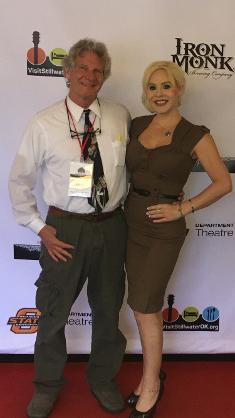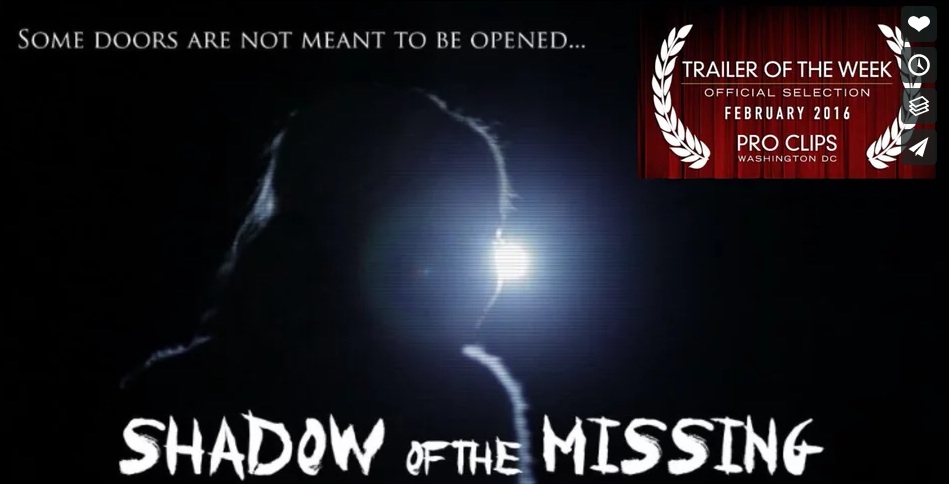Father & Daughter Film Report
INTERVIEW
with
JAMIE LEE SMITH:
Five Misconceptions of Indie-Film Making

1.) The SAG Misconception.
This topic can actually be divided into two subtopics, each of which are equally detrimental to successful indie filmmaking. Actors falsely assume that they NEED to join SAG-AFTRA, and Filmmakers falsely believe that they have to “go SAG” in order to have a professional project. While there are entire books which could be written on each misconception, let’s tackle them just a bit here and now.
“I need to join SAG-AFTRA.”
Actually, you don’t. Larger studio productions are almost always union, and probably should be. But many, many smaller productions are non union by choice or fiscal restrictions. Non union actors can often get work on both union and non union sets (non union members can Taft-Hartley in to the project), but once you’re a SAG member, you are told you must stop all non-union work! If you are working pretty steadily doing non-union films, you might want to re-think joining SAG-AFTRA .
Union jobs are often hard to come by. There are so many actors vying for each job, and the newbie is unlikely to get a featured or co-star role. From indie film to commercials to industrials, there is a lot of non-union work out there. You can make a fair living and you will build up a decent resume of work. Being a SAG member does not make you appear any more professional in the eyes of a director. It really all comes down to talent and the project’s requirements.
Every day I see auditions from terrible union actors and brilliant non-union actors (and visa versa).
If you do get work on a large union set and decide to join SAG, I highly recommend that you go “Fi-Core”. The union will try to scare the underwear off you about this taboo topic. Fi-Core or "financial core" status is a distinction within the Screen Actors Guild allowing actors to work both union and non-union jobs.
Based on a 1963 Supreme Court ruling (NLRB v. General Motors), the result is an option for actors to not be bound by the Screen Actors Guild member requirement of working only on SAG signatory projects. In my opinion the SAG website is very misleading and uses scare tactics to try to convince actors to not exercise their right to work on both union and non-union sets. This attitude benefits the union, but does it really benefit the out of work actor?
In reality, an actor who elects to go FiCore is categorized as a "fee paying non-member' or SAG-AFTRA FPNM. What does this mean in real life? It means you can act on both union and non union set projects. Oh, and You can’t run for office in union elections or vote for candidates for union office. Boo Hoo!
Another intimidating threat on the SAG page states " Fi-Core/FPNM are viewed as scabs or anti-union by SAG-AFTRA members, directors, and writers-most of whom also belong to entertainment unions." Nonsense! In fact, many producers and directors I know value fi-core actors as they bring with them experience from all types of sets and projects.
If a director cares more about your SAG membership status that they do about your talent, appearance and appropriateness for the role, do you really want to work for that person?
“I have to go SAG on my set.”
Are you kidding? Thousands of non-union projects are filmed each year, and quite a few go on to make money. Unless you are making the next KONG or AVATAR, you might want back that truck up a bit before you sign your life away to SAG-AFTRA. Remember, we are talking indie film. Here are a few things to keep in mind…
Despite the illusion of indie-friendly service presented on the SAG INDIE web page, there are many, many horror stories of SAG strong arm tactics and abusive practices that hurt the small time indie-films. The demands of residuals in distribution, 40% security deposit requirements on top of payroll, Overtime payouts, restrictions on overseas distribution, and massive paperwork requirements are just the beginning.
There are serious concerns regarding Domestic distribution as well. Several of the lower budget contracts (the ones many indie producers are drawn to) require an "initial theatrical release." Without a theatrical release, films get bumped up to the higher residual levels, consecutive employment requirements, and overtime penalties of the Basic Theatrical agreement. The odds of an independent film going theatrical, especially without a name actor, have been listed as between one and three percent. Unless your hit the distribution lottery, you will pay more in the end just for the privilege of marketing your film.
I encourage indie film producers to do their due diligence and research this troubling issue apart from the online propaganda of SAG-AFTRA. There are producers out there who are willing to tell their story. Listen and learn. Some have been lucky with SAG-AFTRA, some have not. With the wonderful choices of acting talent that exists in the non-union, SAG Eligible, and FiCore pools, most indie producers will find all the actors they need without ever surrendering their sovereignty or their rights.
2.) Budgeting boo boos!
Many indie-filmmakers don’t consider what happens after post-production. Unless you are keeping your film on a shelf you are going to need to put it in festivals and get the word out. Create some “indie-film buzz” In other words, you need to include P&A (posters and advertising) in your budget. This is usually the same amount as the production budget. It allows for festival entries and travel, attending film markets and/or advertising.
You should start your own social media run in pre-production to get the ball rolling. Getting your film out there, creating buzz, getting it seen by potential distributors. If you do in fact get distribution, you will need to make sure you have enough money for the deliverable requirements, which vary from distributor & platforms.
3.) Filmmakers are creative….they don’t need to know about the business.
WRONG! I have met so many talented filmmakers who only want to create their “work of art.” Only focus on the movie. Unless you are independently wealthy or simply want to make films as a hobby, then you need to consider this as a business and that starts in pre-production. Understanding the business from pre-production all the way into the festival run and potential distribution needs to be considered before you start making your film. If you don’t have this knowledge, bring someone on your team who does.
4.) Festivals, Accolades, Attendance...really don’t matter.
All three of these are SO important. Festivals get your film out in the world. You never know who is in the audience screening. You can get buzz for your film and meet other filmmakers as well. If your film is accepted into a festival and nominated for award you or a representative should be in attendance.
I think this is so very important.
By attending your own screening and other people’s screenings, you are telling people that you not only support other indie filmmakers, but your film matters,. Attending festivals allows you to meet and network with other filmmakers, distributors, other people in various parts of the industry and to see what else is out there. If you do win, you are present to accept your award.
Nothing worse than attending a festival where half the winners are not present. Accolades grab the attention of distributors and demonstrates you have a good, well liked product. They also look fantastic on the movie posters!
5.) Distribution is no longer an option: Deals are dead. WHAT, seriously?
There are more distributors now than ever before! Especially with streaming. Even major networks have streaming platforms and everyone is in the “original content” race. Many TV series and movies that are “original content” were discovered at festivals (ie: Mr. Robot.)
We also have more content than ever before, which makes indie filmmaking a tough competition. If you plan and budget your film in preparation of distribution, every film has distribution and income potential. Getting your film to festivals, collecting accolades and (hopefully) wins, getting it seen and making sure you have the ability to get the deliverables to the distributor makes all the difference.
If you go into pre-production with a plan than includes distribution, you have a much better chance at getting it.




